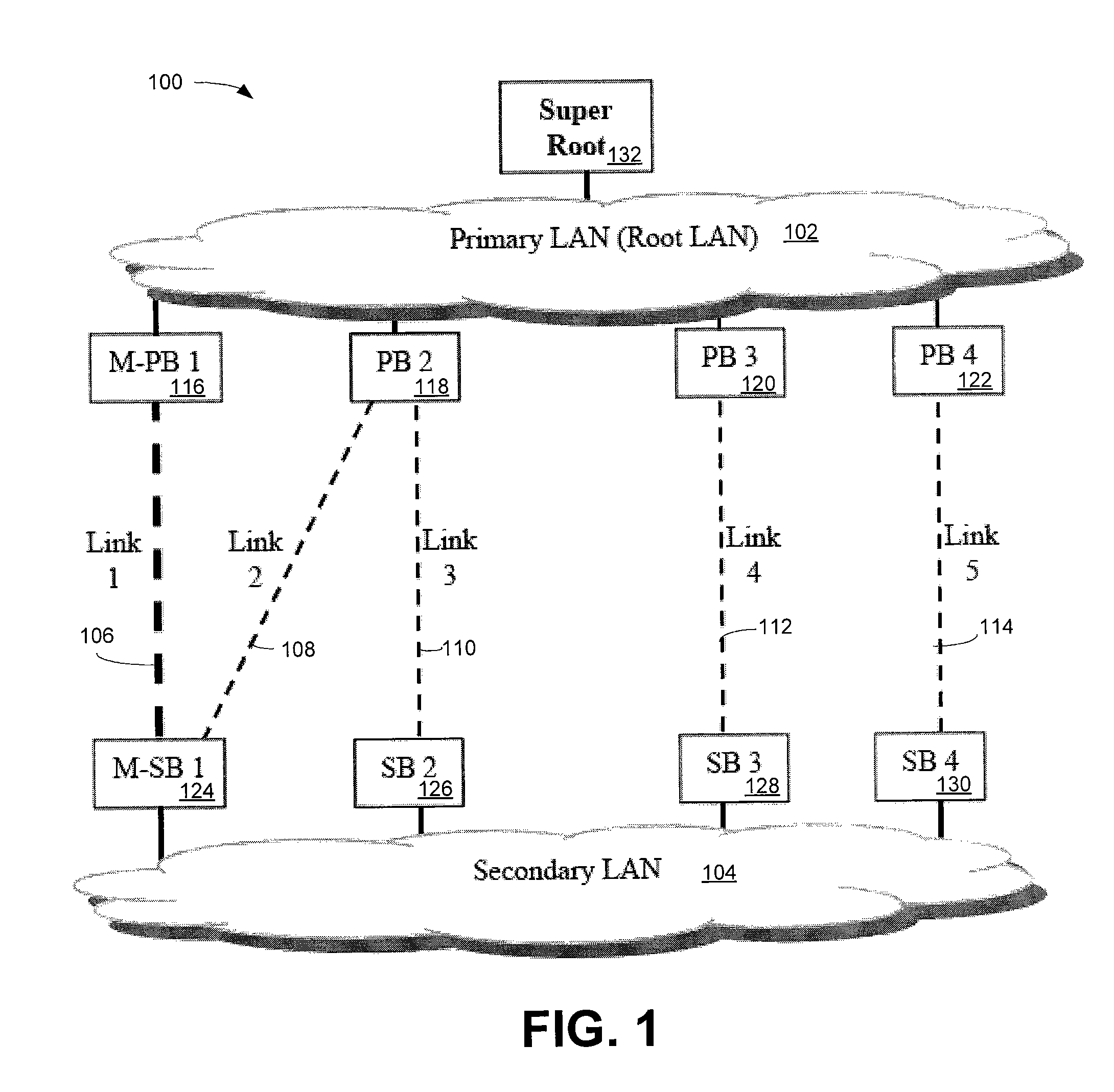Transparent wireless bridge route aggregation
a wireless bridge and route technology, applied in the direction of data switching by path configuration, digital transmission, data switching networks, etc., can solve the problems of multiple wireless bridges, slow wireless bridges, and the stp protocol likely to break the bridging loop, so as to increase the bandwidth and robustness of the wireless path
- Summary
- Abstract
- Description
- Claims
- Application Information
AI Technical Summary
Benefits of technology
Problems solved by technology
Method used
Image
Examples
example embodiments
DESCRIPTION OF EXAMPLE EMBODIMENTS
[0023]This description provides examples not intended to limit the scope of the invention, as claimed. The figures generally indicate the features of the examples, where it is understood and appreciated that like reference numerals are used to refer to like elements.
[0024]In an example embodiment, there is described herein a “Wireless Route Aggregation Protocol” (WRAP) that is used to aggregate multiple wireless links into a WRAP “route bundle” that functions as single logical LAN bridge link. WRAP link aggregation can be used, for example, to increase the bandwidth and robustness of the wireless path between two wired Ethernet LANs.
[0025]A “link” is used herein to refer to a wireless link between two radios—one in each of two wireless bridges. A link is terminated by two Link Endpoints—one in each wireless bridge. In an example embodiment, a Link Endpoint is identified by a 48-bit 802 address. A single wireless bridge has 1 or more radios and each ...
PUM
 Login to View More
Login to View More Abstract
Description
Claims
Application Information
 Login to View More
Login to View More - R&D
- Intellectual Property
- Life Sciences
- Materials
- Tech Scout
- Unparalleled Data Quality
- Higher Quality Content
- 60% Fewer Hallucinations
Browse by: Latest US Patents, China's latest patents, Technical Efficacy Thesaurus, Application Domain, Technology Topic, Popular Technical Reports.
© 2025 PatSnap. All rights reserved.Legal|Privacy policy|Modern Slavery Act Transparency Statement|Sitemap|About US| Contact US: help@patsnap.com



